Teriyaki Salmon Recipe
Teriyaki salmon is a very easy salmon recipe, perfect for any day of the week. It’s baked in a delicious homemade teriyaki sauce and you can serve it over rice, salad, or vegetables. So flavorful and ready in less than 30 minutes.
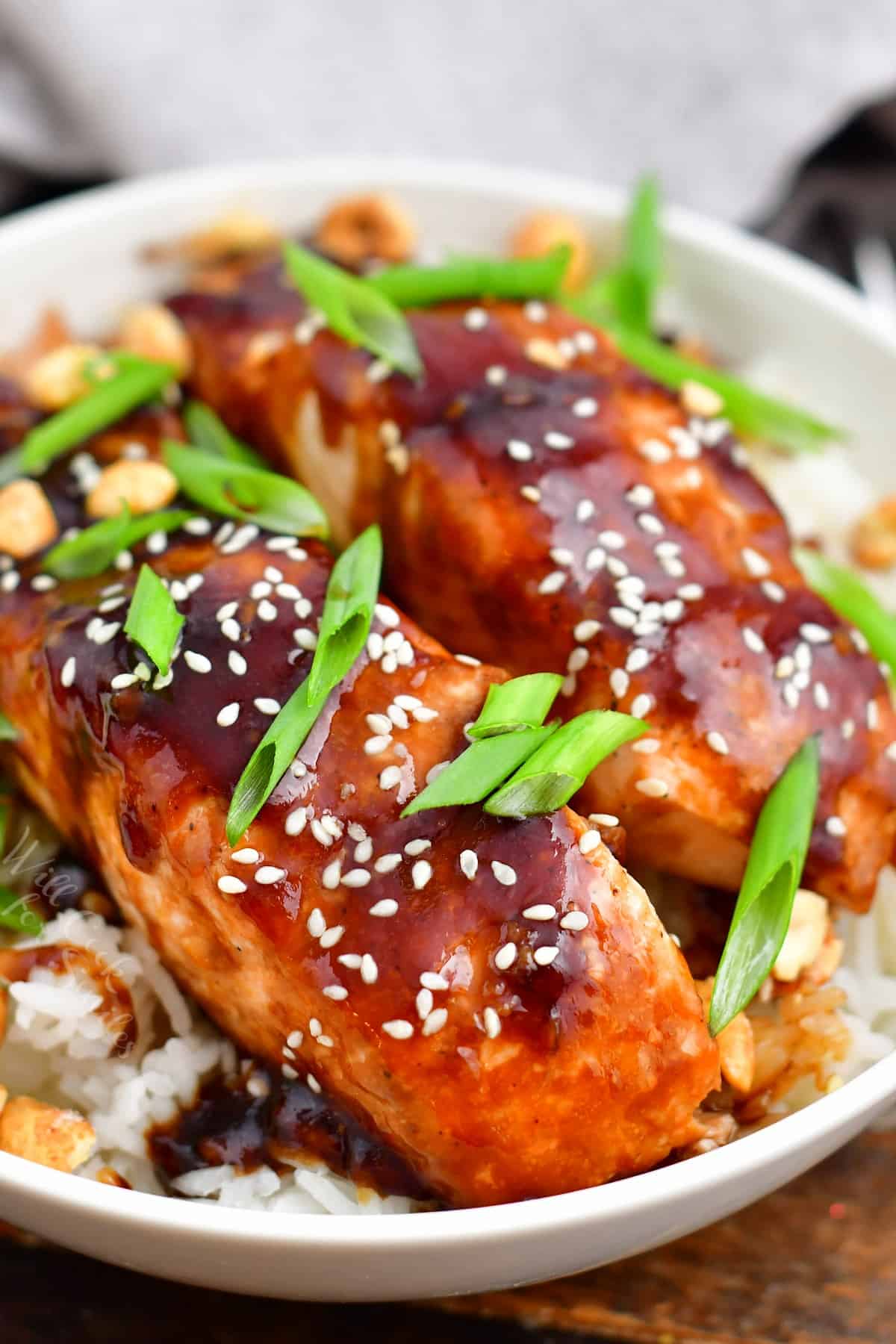
Table of contents
Salmon is always my go-to fish for an easy and heathy weeknight dinner. It has a wonderfully mild flavor that is not as fishy as some other catches tend to be.
Everyone loves its meaty and flaky texture too. Salmon also has a richness that pairs perfectly with the salty, sweet, and tangy flavors of my homemade teriyaki sauce.
There is a reason that salmon is on the super-foods list. It’s full of health benefits and should definitely be on your weekly menu. Not only are there a variety of vitamins and minerals found in salmon, but it’s also rich in healthy Omega-3 oils and fats.
This combination is known to help regulate blood pressure, reduce the risk of heart attacks, and improve overall heart function. Because of these benefits, the American Heart Association recommends eating 2 servings of fish per week.
Ingredients Tips and Substitutions
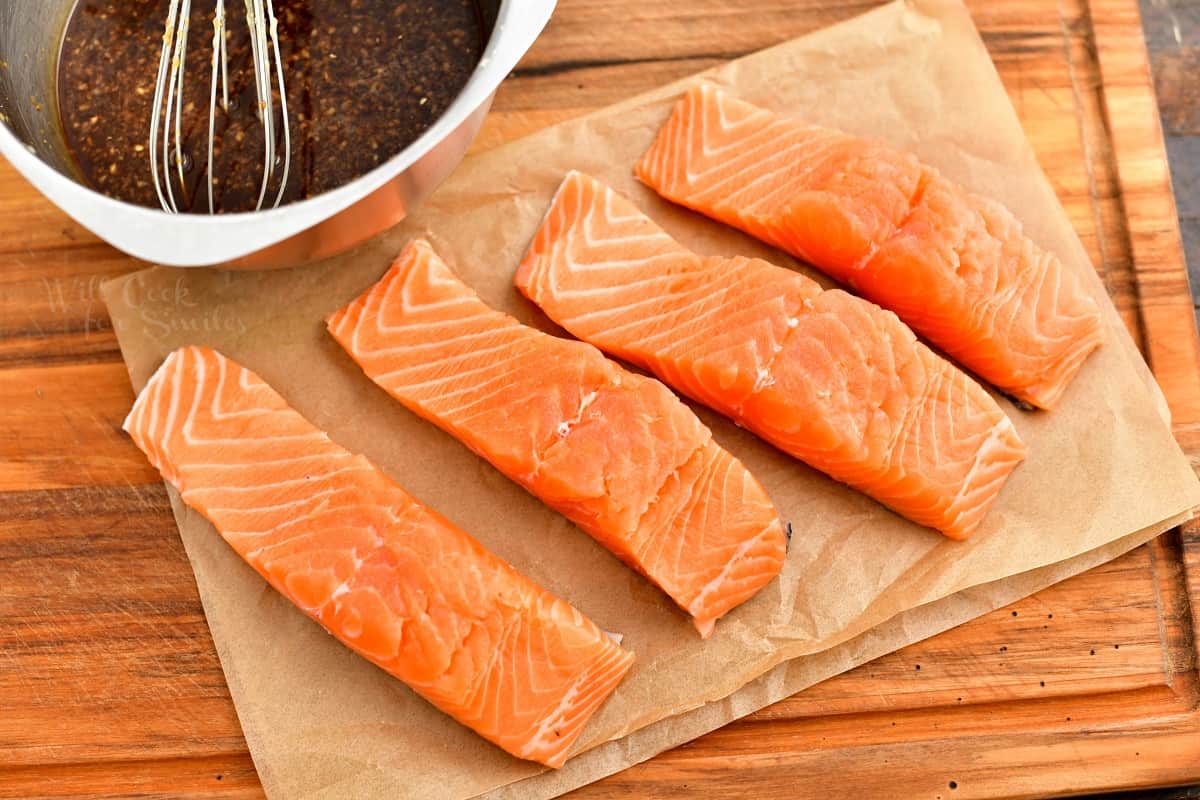
- Fresh salmon fillets – It’s best to use fillets with the skin still on. Doing this adds a layer of protection between the fish and the heat from the pan. Plus, it helps lock in the juices, keeping the salmon tender and moist. There is also a hefty storage of healthy fats in a layer between the skin and the meat.
- Soy sauce – Choose a low sodium version so the sauce isn’t too salty. If needed, use a gluten free alternative like gluten free soy sauce or tamari.
How To Make Teriyaki Salmon
- Step 1: Prepare the Fish. First, pat salmon filets dry with a paper towel, season with salt and pepper, and rub the skin with a little bit of oil. Place them into a preheated cast iron skillet, skin side down.
- Step 2: Sear. Let salmon sear until the skin starts to crisp and releases more oils.
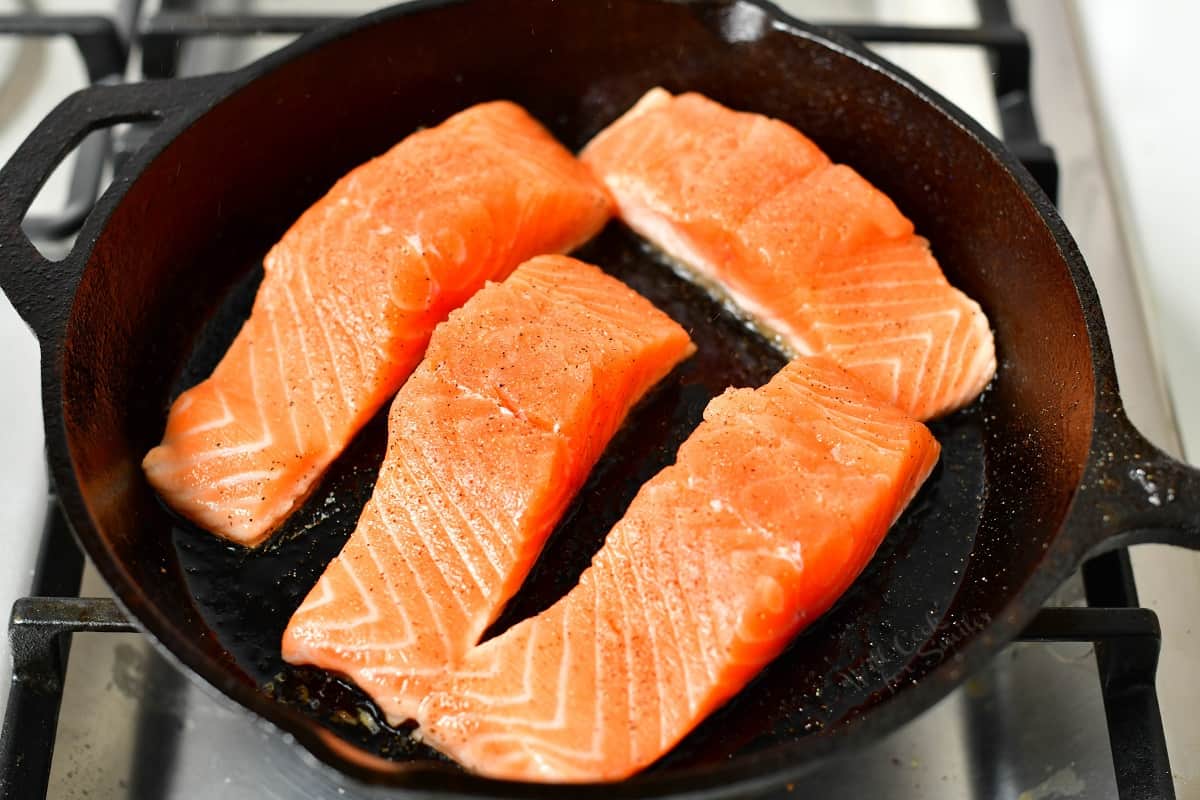
- Step 3: Add Sauce. While salmon is searing, whisk together all of the teriyaki sauce ingredients, then pour over the fish in the pan.
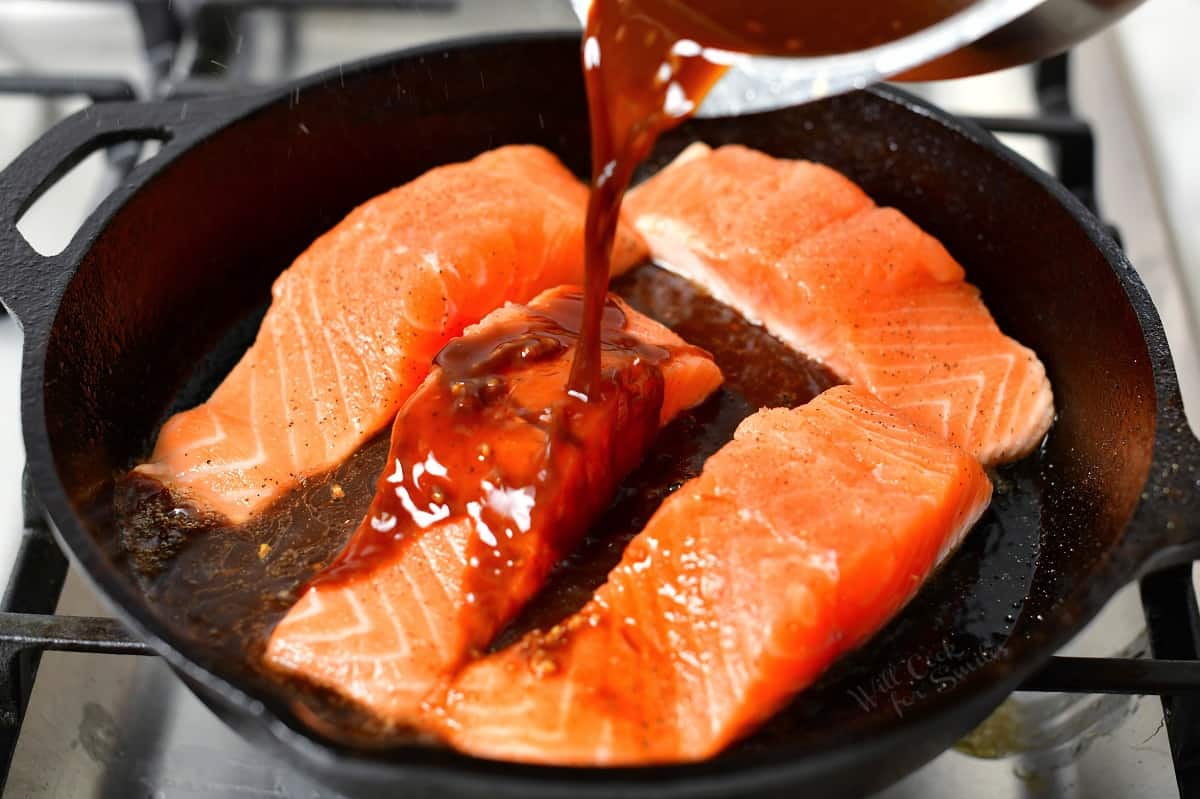
- Step 4: Bake Salmon. Transfer the skillet into an oven preheated to 425F° right away and bake until salmon is cooked through. (Depending on the size of filets, could be 10-15 minutes.)
- Step 5: Garnish and Serve. Serve this salmon over rice with some more sauce spooned on top, scallions, sesame seeds, and even some peanut for a little crunch.
How To Tell If Salmon Is Done?
- A method that always works no matter what is using a meat thermometer. It is recommended by USDA to cook salmon to 145° internal temperature, which is when salmon is considered fully done.
- Personally, I prefer salmon at either medium or medium-well temperature, which is around 125°-130°.
- Many seasoned cooks can check if salmon is done by touch to see how firm it is. It will also be firm to the touch in the center and not feel squishy inside.
- When it is properly cooked, the fish will no longer be shiny or translucent, it should be opaque and flake apart easy.
- Another way to determine doneness is to insert the tines of a fork at an angle into the center of the fillet and gently twist. If the flesh easily separates from the white lines of fat, the salmon is done.
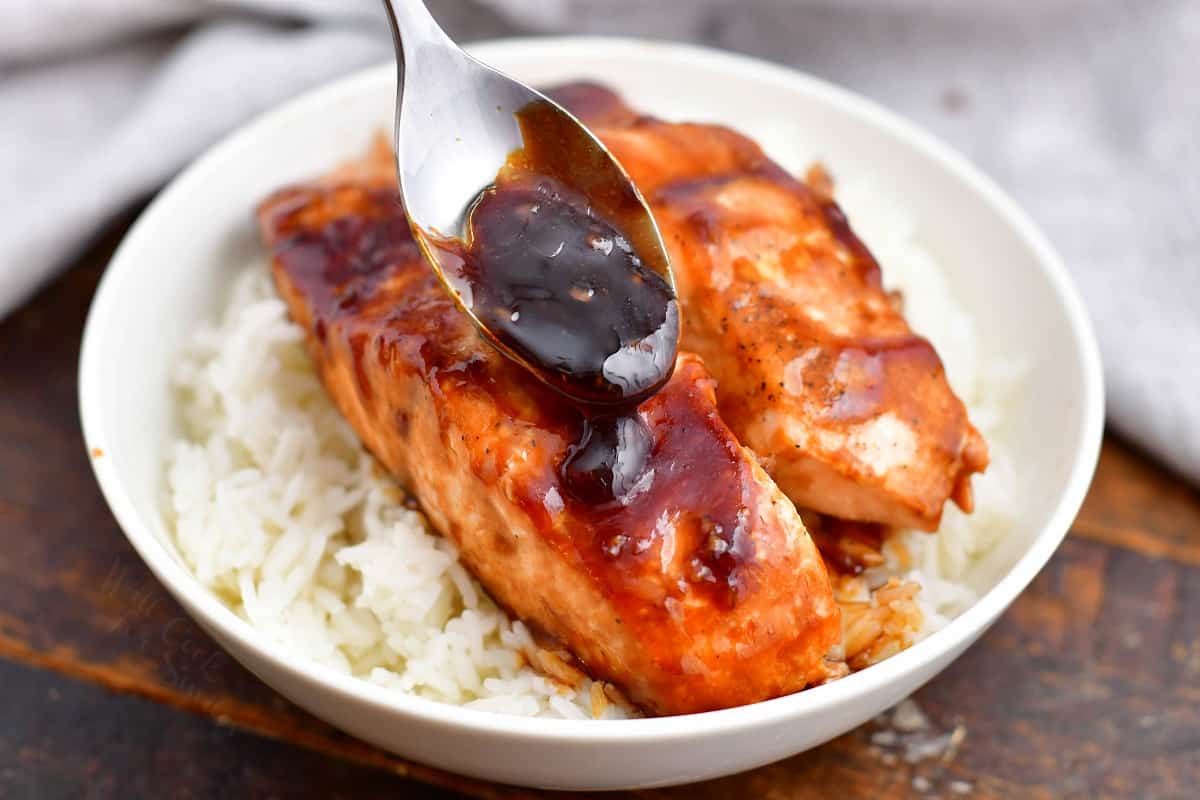
Serving Suggestions
- Pair this teriyaki salmon with steamed jasmine rice, a sprinkle of scallions, and sesame seeds for color and texture. Try it with coconut rice as well.
- I love adding some peanuts for a crunchy texture as well.
- To make it healthier, serve it with steamed or roasted vegetables like broccoli or cauliflower, instead of rice.
- If you want to make it Keto, use coconut aminos instead of soy sauce and an alternative sweetener instead of honey. Use low-carb vegetables instead of rice.
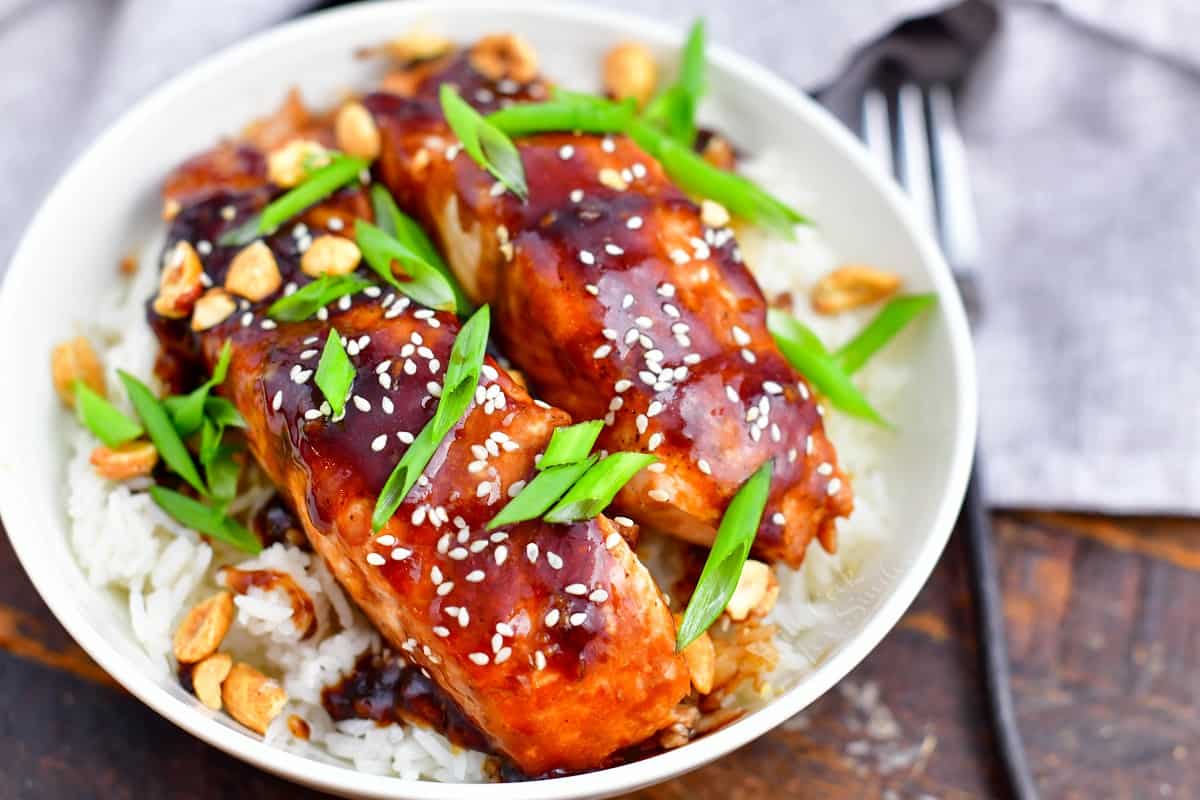
What is the Best Way to Reheat Salmon?
- To keep the fish from drying out or becoming overcooked, so skip the microwave and use the oven or stove-top instead.
- Reheat teriyaki salmon in the oven at 350°F until warmed through, and use a lined baking sheet for easy cleanup. It also helps to add a splash of liquid or extra sauce to the pan and cover it loosely with foil to trap the moisture.
- On stovetop add a little oil to the pan, place the salmon into it, cover, and reheat over medium-low heat just until warmed through.
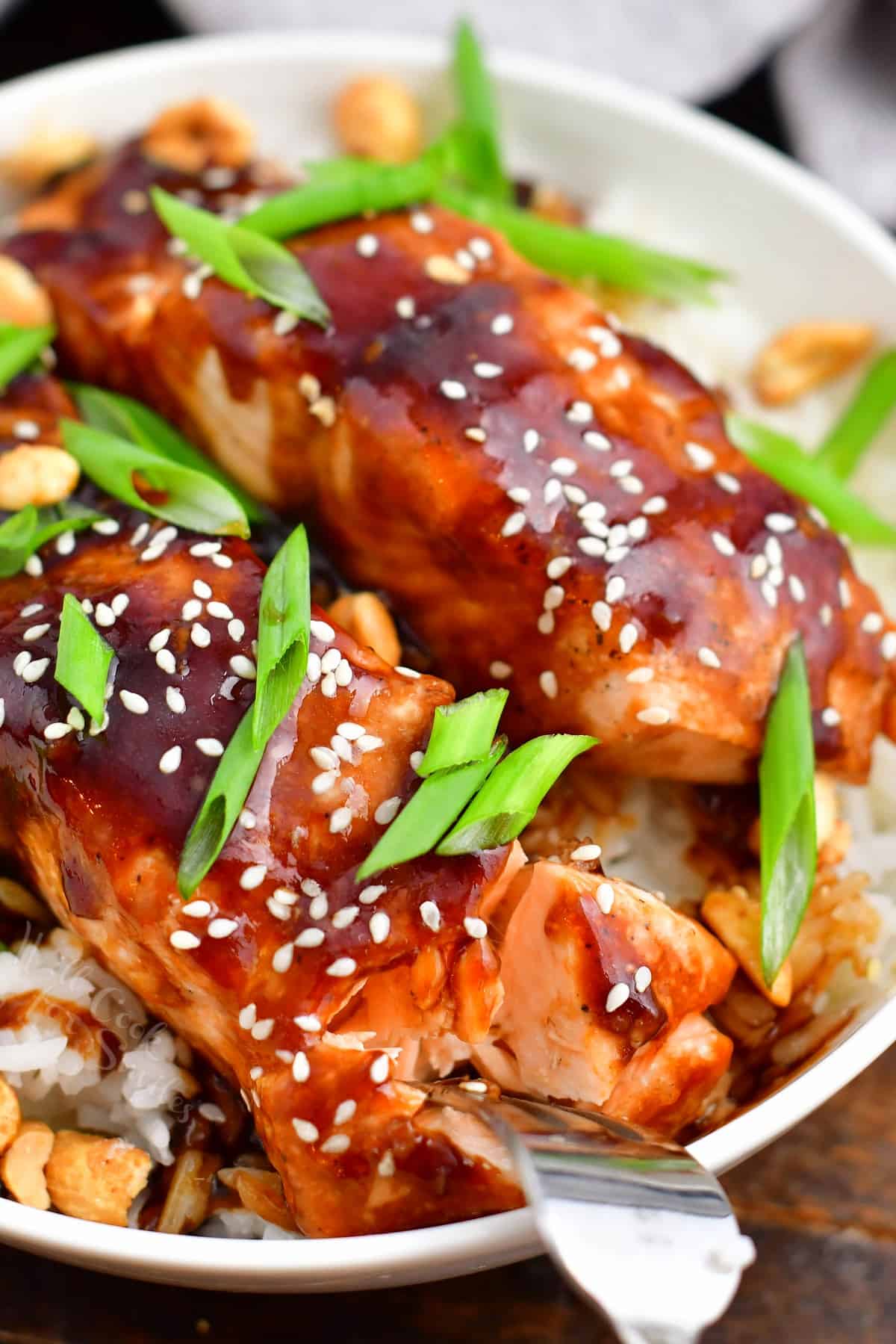
More Teriyaki Recipes To Try
DID YOU MAKE THIS RECIPE? PLEASE leave a 🌟 star rating! Let me know how you liked it by leaving the 📝 comment below or share and tag me on social media @willcookforsmiles. DON’T FORGET to subscribe to my newsletter!

Teriyaki Salmon Recipe
Ingredients
- 2 lbs salmon fillets skin on preferred
- oil avocado, canola, or vegetable
Teriyaki Sauce:
- 1/2 cup low sodium soy sauce* use gluten free if needed
- 1/4 cup honey
- 4 garlic cloves
- 1 tbsp rice vinegar
- 1/2 cup chicken stock or broth
- 1 1/2 tbsp cornstarch
Serving Suggestions:
- Jasmine rice
- scallions
- sesame seeds
- chopped peanuts
Instructions
- Note: If using skin on salmon, I recommend to take an extra step of searing the skin first before adding sauce and placing in the oven. This will give the sauce and the salmon better tasting results because less fat will melt into the sauce.
- Preheat the oven to 425°F.
- Make sure the there are no scales left of the salmon skin. Pat salmon dry with a paper towel and season the top and sides with a little salt and pepper. Rub the skin with some oil.
- Preheat a cast iron skillet, or another cooking pan that can safely go from stove-top to the oven, over medium-high heat.
- Add a little bit of oil and place salmon into the skillet, skin down.
- Let it sear for about a minute or a minute and a half.
- Whisk all ingredients for the teriyaki sauce in a bowl.
- Use a fish spatula to loosen the salmon off the pan and pour in the teriyaki sauce, pouring it over salmon.
- Transfer the skillet into the oven right away and bake for 10-15 minutes, depending on the size and thickness of salmon. Cooked salmon should be 145°F internal temperature. (If you want medium to medium-well doneness, cook to 125°F-130°F)
- Take salmon out of the oven and out of the pan so it doesn't continue to cook.
- Serve salmon on a bed of rice topped with some more sauce, scallions, and sesame seeds.
Notes
- *Gluten Free Notes: to make this recipe gluten free, make sure to use gluten free soy sauce or tamari in the sauce recipe.
- Storing: store leftovers in an air-tight food storage container, in the refrigerator for 3-4 days.
- Reheating: Reheat teriyaki salmon in the oven at 350°F until warmed through, and use a lined baking sheet for easy cleanup. It also helps to add a splash of liquid or extra sauce to the pan and cover it loosely with foil to trap the moisture.
On stovetop add a little oil to the pan, place the salmon into it, cover, and reheat over medium-low heat just until warmed through.
Nutrition
Originally published on Will Cook For Smiles in January 2021.
All images and text ©Lyubov Brooke for ©Will Cook For Smiles. Please do not use my images without prior permission. If using my posts in collections and features, please link back to this post for the recipe.
Disclaimer: Nutrition information shown is not guaranteed to be 100% accurate as most ingredients and brands have variations.
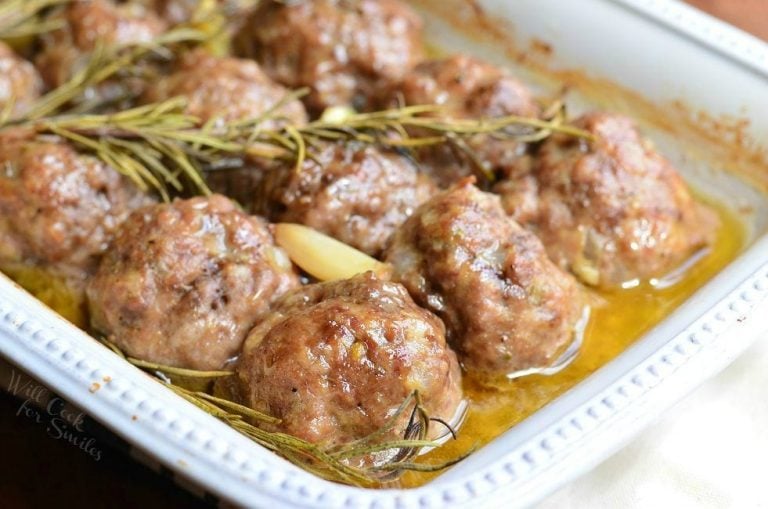
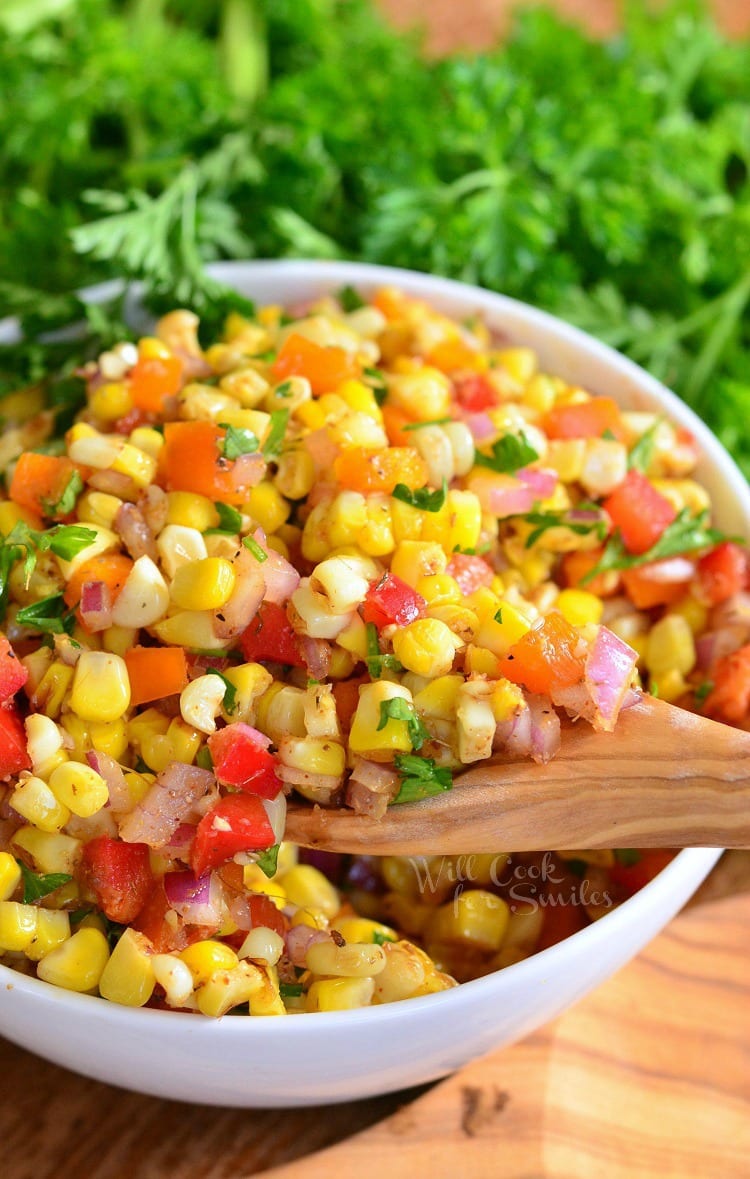
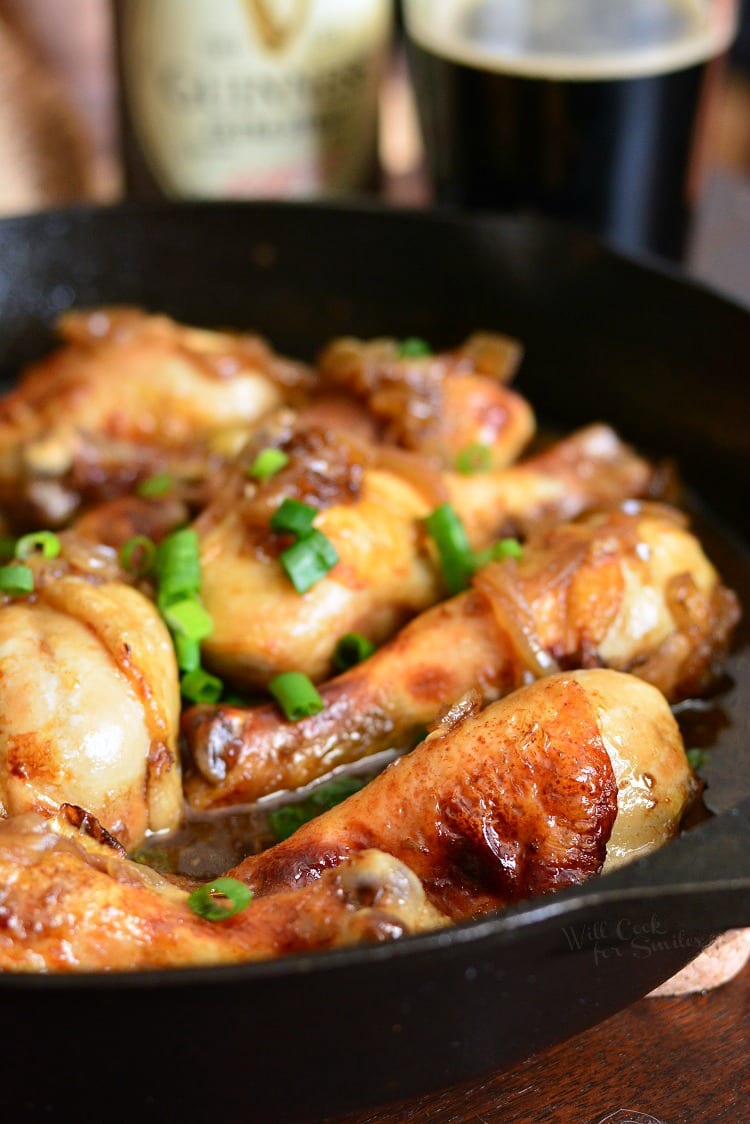
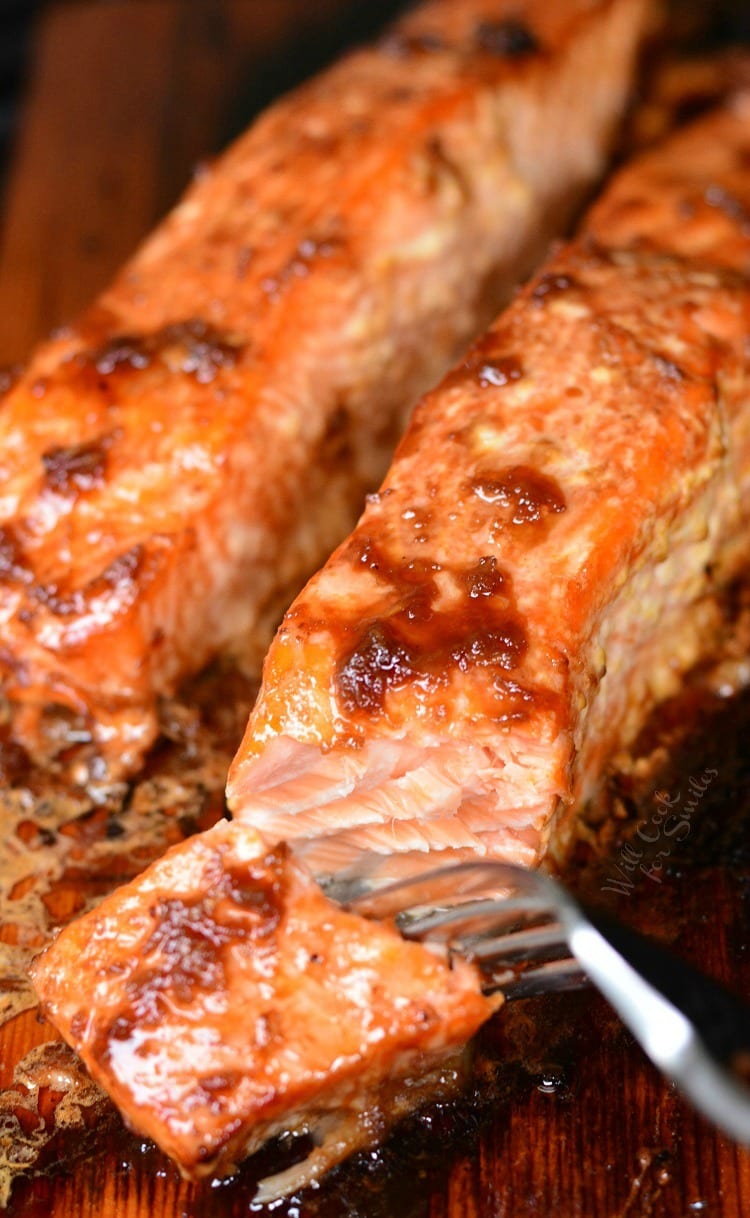
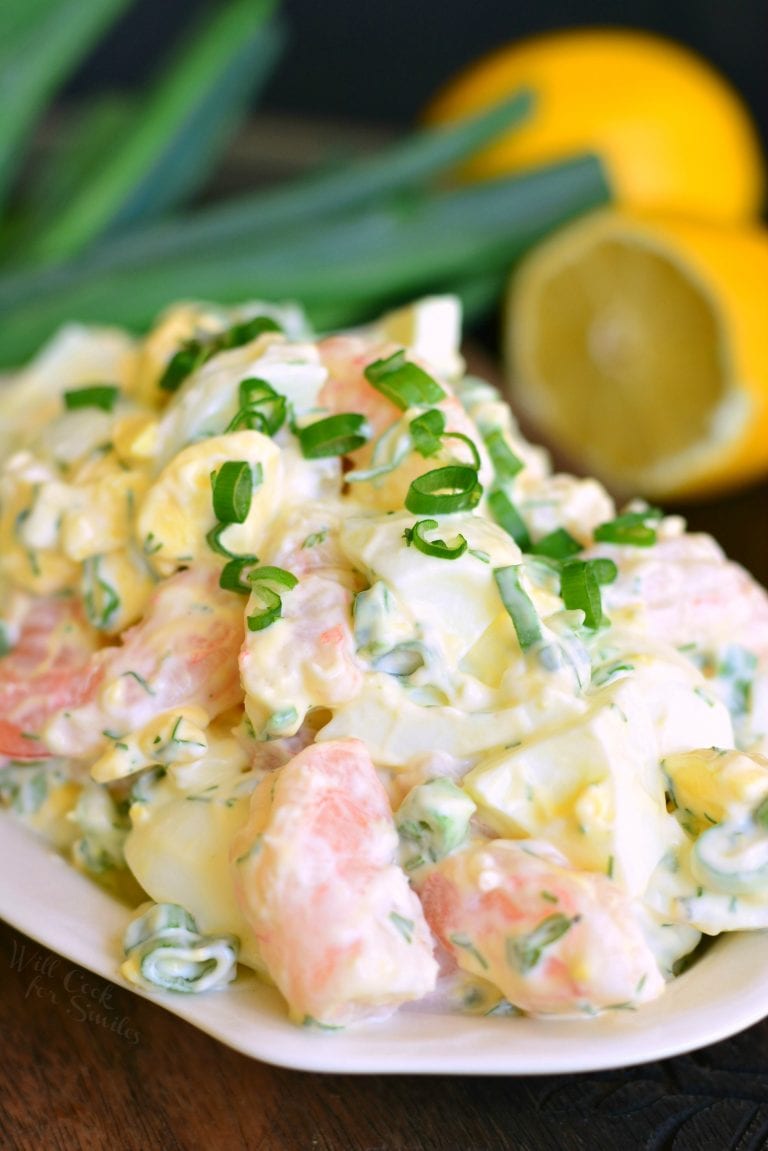
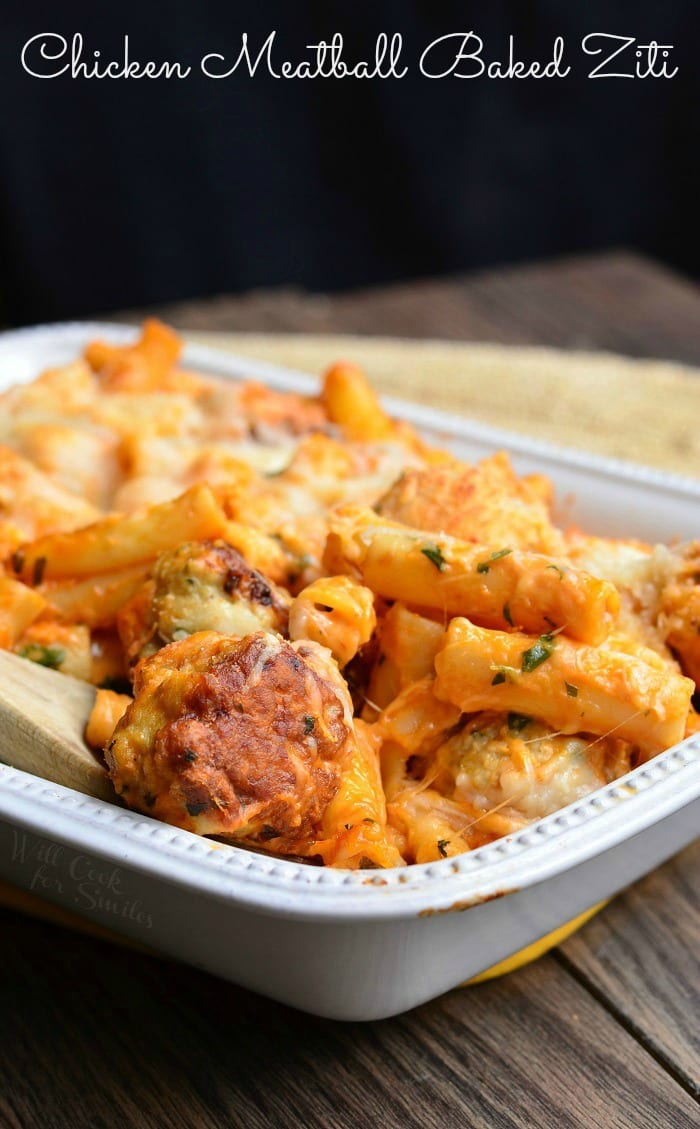








Doesn’t say when to remove the skin?
Hi Hannah,
I keep the skin on if you’d like to remove it I would do it after it is done cooking which could be messy or get skinless.
I would love to know the nutritional value. I love salmon, can’t wait to try it. thanks
Hi, You can find it at the bottom of the recipe card above and I will copy and paste it below.
Calories: 431kcal | Carbohydrates: 25g | Protein: 48g | Fat: 15g | Saturated Fat: 2g | Cholesterol: 126mg | Sodium: 1207mg | Potassium: 1223mg | Fiber: 1g | Sugar: 18g | Vitamin A: 91IU | Vitamin C: 1mg | Calcium: 38mg | Iron: 3mg
This was simple and a huge hit!! Delicious.
Thank you, Jojo! I am so glad you liked it!